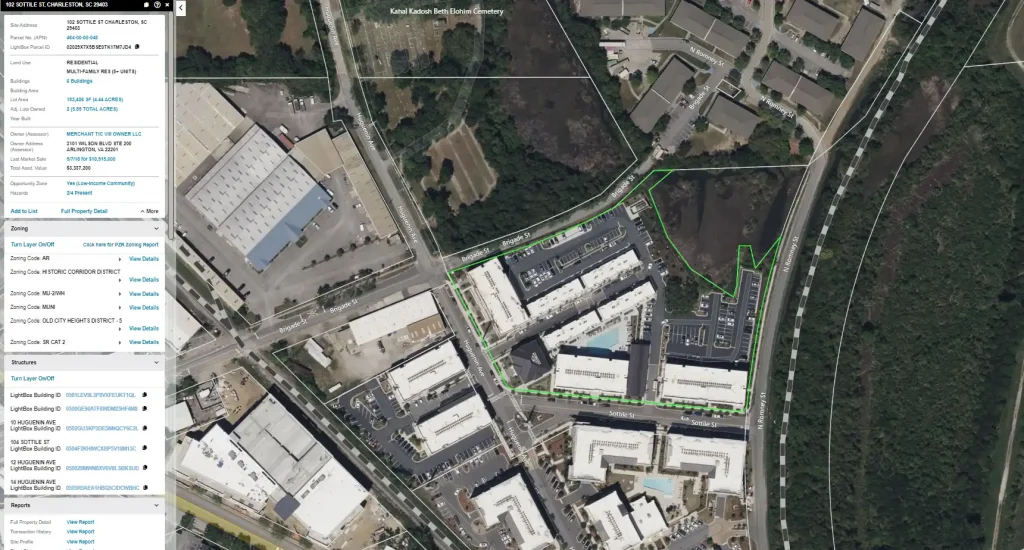Are short-term vacation rentals damaging the character of small towns and cities, or are they making popular destinations more affordable and convenient for traveling families? It depends on whom you ask. Short-term rentals (STRs) have become a booming investment opportunity in recent years, with over 2 million properties listed across the United States on platforms like Airbnb and Vrbo. The STR market has surged as travelers increasingly seek affordable and flexible lodging options, making it an attractive venture for homeowners and investors alike.
However, as the popularity of STRs has grown, so too have the concerns of city governments around the world due to concerns around housing shortages, rising rents, neighborhood disruptions, and the loss of local tax revenue from traditional lodging. Cities around the world are increasingly responding with stricter regulations, using zoning laws, ordinances, and overlays to address the perceived negative effects of these rentals on local housing markets and communities.
Understanding Short-Term Rentals
STRs are residential properties rented out for periods of fewer than 30 days, typically serving as vacation accommodations or temporary housing. For travelers, STRs offer a more personalized experience and spacious alternatives to traditional hotels, often at a lower cost. For hosts, the financial incentives are significant, particularly in high-demand tourist areas where nightly rates can far exceed monthly rents from long-term tenants.
In Manhattan for example, the average monthly rent for a one-bedroom apartment is approximately $5,588, a figure that has risen by 9% over the past year, setting a record. In contrast, a well-located one-bedroom STR could bring in between $7,500 to $12,000 or more per month, depending on occupancy rates—far outpacing the returns from long-term leases.
Why Are Cities Cracking Down?
Some cities offer more favorable conditions for STRs due to minimal restrictions and clear, long-term permit processes. Cities like Phoenix, AZ, Memphis, TN, and Orlando, FL lead the pack, thanks to flexible regulations and multi-year permits.
Conversely, cities like New York, San Francisco, Los Angeles, Newark, and Honolulu have implemented stringent regulations, largely driven by concerns over housing affordability. The conversion of residential units to short-term rentals reduces available housing, driving up rents—Airbnb alone was found to account for 9.2% of rent increases in New York City from 2009 to 2016. Furthermore, the influx of short-term guests often disrupts neighborhoods with noise, trash, and safety issues, prompting these cities to tighten STR regulations to protect community character and resident quality of life.
Cities Clamp Down While Airbnb Diversifies to Survive
From New York to California, regulatory pressure is mounting, posing significant challenges for platforms like Airbnb. The San Francisco-based company recently reported a 15% drop in profits for Q2 compared to the same period last year. During the company’s Q2 earnings call, CEO Brian Chesky indicated that the company plans to broaden its offering into new products and services, including co-hosting, a relaunch of Airbnb’s “experiences,” guest services and more.
While Airbnb works on shifting its strategy, cities are employing a range of their own strategies to regulate STRs, often using zoning laws, occupancy limits, and special overlays.
Zoning Overlays Restricting Short-Term Rental Locations
Charleston, South Carolina established zoning overlays—specific zones where STRs are allowed, and each zone has its own set of rules. For example, properties in the Short-Term Rental Overlay Zone are eligible for commercial STR permits, while other areas, like the Old and Historic District, are limited to residential STRs where the property must be the owner’s primary residence. Properties outside these zones—only 2% of properties are within—are generally not allowed to operate as short-term rentals unless homeowners reside in the home while hosting guests, and the number of adult occupants is capped at four.

Across the country in Los Angeles County, zoning overlays have been established to crack down on STRs. The regulations restrict rentals to primary residences only, prohibiting the use of accessory dwelling units (ADUs), rent-restricted properties, and second homes for short-term rental purposes. Hosts are required to register annually with the county and pay a $914 fee. The ordinance sets specific rules for “hosted” and “unhosted” stays. Hosted stays, where the owner remains on-site, are limited to 90 days per year, while unhosted stays require at least a one-night minimum. There are also occupancy limits (a maximum of 12 guests), and STRs cannot be used for large parties or commercial events.
While these regulations are now in effect in unincorporated areas of Los Angeles County, in certain coastal areas, such as Marina del Rey, these regulations require further approval from the California Coastal Commission.
Controlling STR Growth with Occupancy Limits and Licenses
Like Charleston and Los Angeles (among many more), San Francisco, which was among the first to implement STR regulations, has implemented zoning overlays that restrict the activity to certain areas. The city also mandates that only permanent residents registered with the city could serve as short-term rental hosts. To qualify as a permanent resident, individuals must live in the property for at least 275 nights per year. While there is no limit on renting out space when the host is present, host-absent stays are restricted to 90 days annually.
Milwaukee, Wisconsin is considering new regulations that would require that owners live on-site at properties they rent out short-term, a regulation already in place in Madison, Wisconsin. The city is also pushing for stricter registration and licensing requirements, targeting the estimated 1,000 unregistered STRs operating in the area.
San Antonio, Texas, has recently revised its STR regulations, including higher fees for the permits and introducing two categories: Type 1 STR owners who do not live at the residence will have to pay $300 every three years and Type 2 STR who do not live at the property will now have to pay $450 every three years for their permit. The city also requires STR platforms, like Airbnb, to remove listings that do not have a valid permit on file.
The Shifting STR Landscape
The impact of these regulations on the STR market has been significant, with some cities seeing a decline in STR listings as regulations make it more challenging to operate legally. New York City, for instance, implemented some of the strictest STR regulations in the U.S. in September 2023. The law requires all hosts to register their properties with the city and mandates that rentals of fewer than 30 days must have the host physically present during the guest’s stay. Additionally, rentals are limited to two unrelated guests at a time, and platforms like Airbnb are prohibited from processing bookings for unregistered properties. Non-compliance can result in fines ranging from $1,000 to $7,500 per violation.
Not all regulations, however, are aimed at restricting STRs. In Idaho, the state is currently considering a bill that would block cities from requiring special exceptions, special use permits (SUPs) and conditional use permits (CUPs) for short-term rentals involving a homeowner’s primary residence. This move has sparked heated debates as some argue it could lead to a surge in STRs, exacerbating housing shortages.
As cities continue to implement and refine regulations on STRs, the debate over their place in urban environments is far from settled. For residents, investors, hosts, and policymakers alike, staying informed about the evolving landscape of STR regulations is essential.
